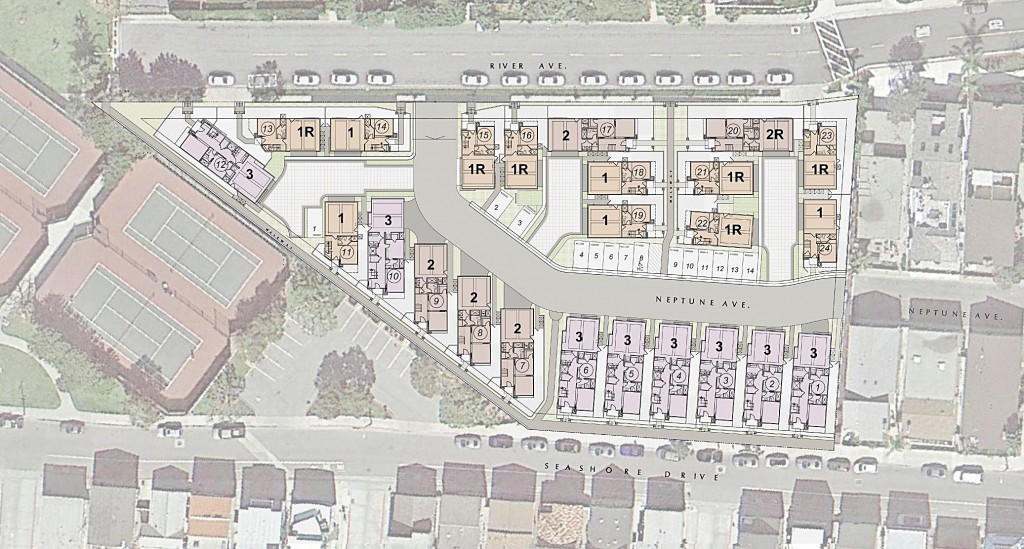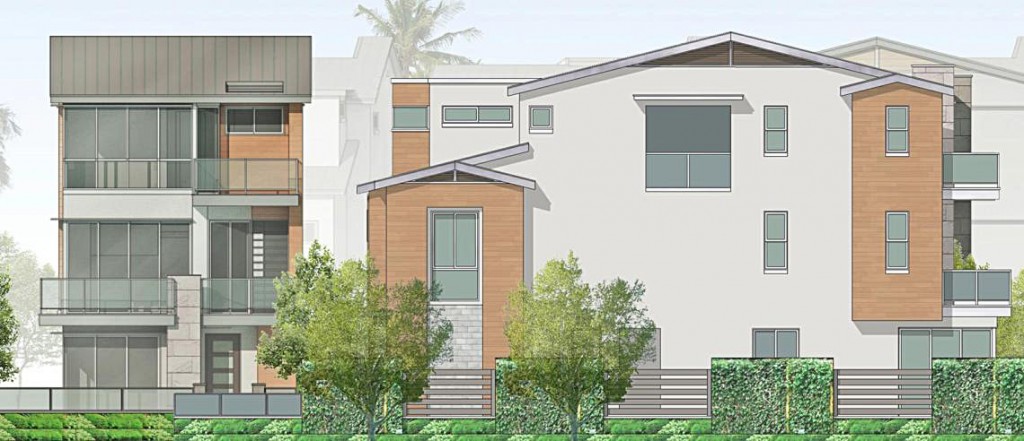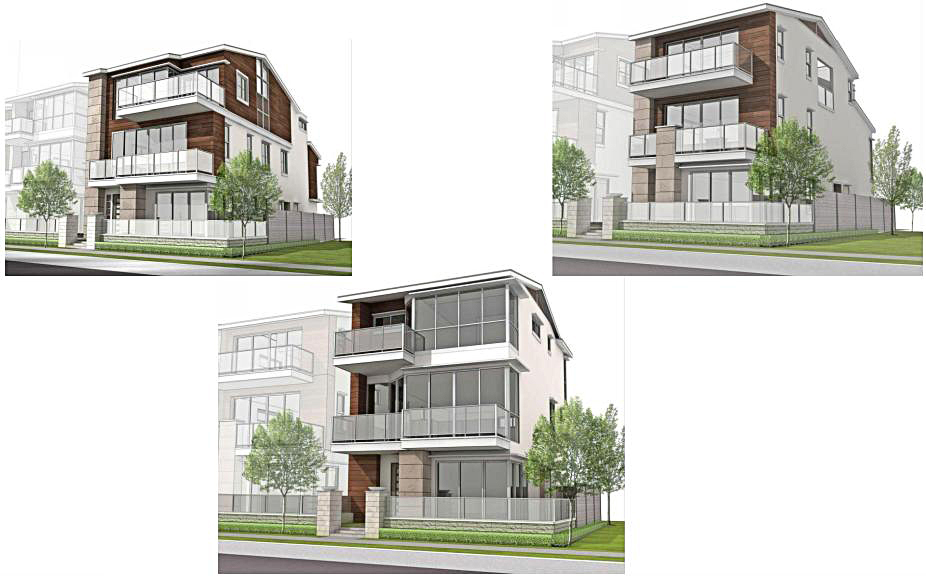
— All photos courtesy city of Newport Beach ©
Newport Beach City Council unanimously voted Tuesday to deny the appeal of the Planning Commission’s decision that found the modified plans for Echo Beach (formerly Seashore Village) project are in substantial conformance.
The original project, located at 5515 River Avenue, was approved in 2008, according to the staff report. The owner and developer at the time never completed the project and eventually sold the property to the current applicant, who desires to construct the project with some modifications, said Senior Planner Jaime Murillo.
The changes include reconfigured site and landscape plans, elimination of duplex product types and revised architectural style.
The previously approved site plan consisted of 12 single-unit dwellings facing Seashore Drive and six duplex units facing River Avenue. The 50,706 square foot project included 48 parking spaces for residents and 15 for guests and about 28.2 percent landscaping.
The modified plan consists of 24 single units, some facing Seashore Drive and others near River Avenue clustered around common motor courts, Murillo explained.
The square feet increases to 50,916 and has one less guest parking space. The landscaping increases to 34.1 percent.
Murillo noted that the modified site plan eliminates the extra curb cut previously proposed on River Ave., which then allows for an additional street parking space.
The updated architectural style is more of a “contemporary modern style,” Murillo said.
The modified project has more landscaping, less pavement and the same “development footprint” and no new impacts whatsoever, said Rich Nolan, representing the developer.
The appellant Lennie DeCaro had several concerns with the modified plans.
While both plans consisted of 24 total units, the original plan had only 18 buildings and the modified plan adds six buildings to the project, she argued.
Noting other Southern California city procedures, adding buildings or changing lots should “knock it out of substantial conformance in a skinny minute,” she continued.
“This would never fly,” in other cities, she said.

The logic that “this would never fly in another jurisdiction” doesn’t apply in Newport Beach, replied Councilman Mike Henn, who represents the district where the project is located.
“My understanding is, we have to apply the zoning code for Newport Beach to the decisions that are made in Newport Beach,” he said. “So I’m wholly unimpressed by an argument about some other city and what they would do.”
Councilwoman Nancy Gardner pointed out that there is a difference between units and actual buildings and questioned whether or not that should be considered a significant change.
“I see both good and bad in this,” she said.
Staff looked to the zoning code for criteria to evaluate substantial conformance, responded Community Development Director, Kim Brandt.
It did not speak to the actual number of buildings or the reconfiguration or location of the buildings on the property, she explained. It focused on the sum total of the number of units or if there was a need for any additional permits. It’s about air space, she added. Only one parcel is involved, she said.
DeCaro made a few other comments against the modified project, including concerns about expired permits, driveway adjustments, special privileges or preferential treatment for a big developer, architectural plan entitlements and more.
Her husband, Bob DeCaro, added that council members couldn’t “possibly consider this the same” project, he said later during public comment.
The original conditions are very specific and the modified plan breaks those conditions, he said. He felt that a lot of the changes would be prohibited according to the original conditions, DeCaro added.
“To allow this to proceed is a travesty,” DeCaro concluded.
“I thought there was a lot to be said for it,” Gardner said. “But I was concerned about all the arguments that were brought up in terms of the city’s approval process. I want to be sure that we’re very comfortable in that.”
Gardner also asked about the Save our Neighborhood v. Lishman case that the appellant had pointed out during her comment.
Staff took a pretty good look at the case, city attorney Aaron Harp said.
“I think overall, it’s our position that these are relatively minor changes from a CEQA standpoint,” he said.
The Lishman case dealt with added mitigation measures, wetlands, and stream realignment, Harp noted. The plans in the Lishman case were significantly different than what was originally approved, he said, it truly was a new project. It’s not the same situation or circumstances as the Seashore Village/Echo Beach project, he said.
Several other members of the public spoke on the matter, both for and against the project.
Mike Johnson, a neighbor to the project on Seashore Drive, lived in the area before the current apartments were built, he said.
“I did not like of the apartments then, I don’t like the look of them now,” he said. But, “I am really pleased with this revised (plan)… I think it’s going to be a vast improvement to our West Newport properties.”
Several of the council members pointed out that the issue isn’t whether the modified project is better, the issue if it is in substantial conformance.
“I think it’s pretty clear that it is,” Henn said.





